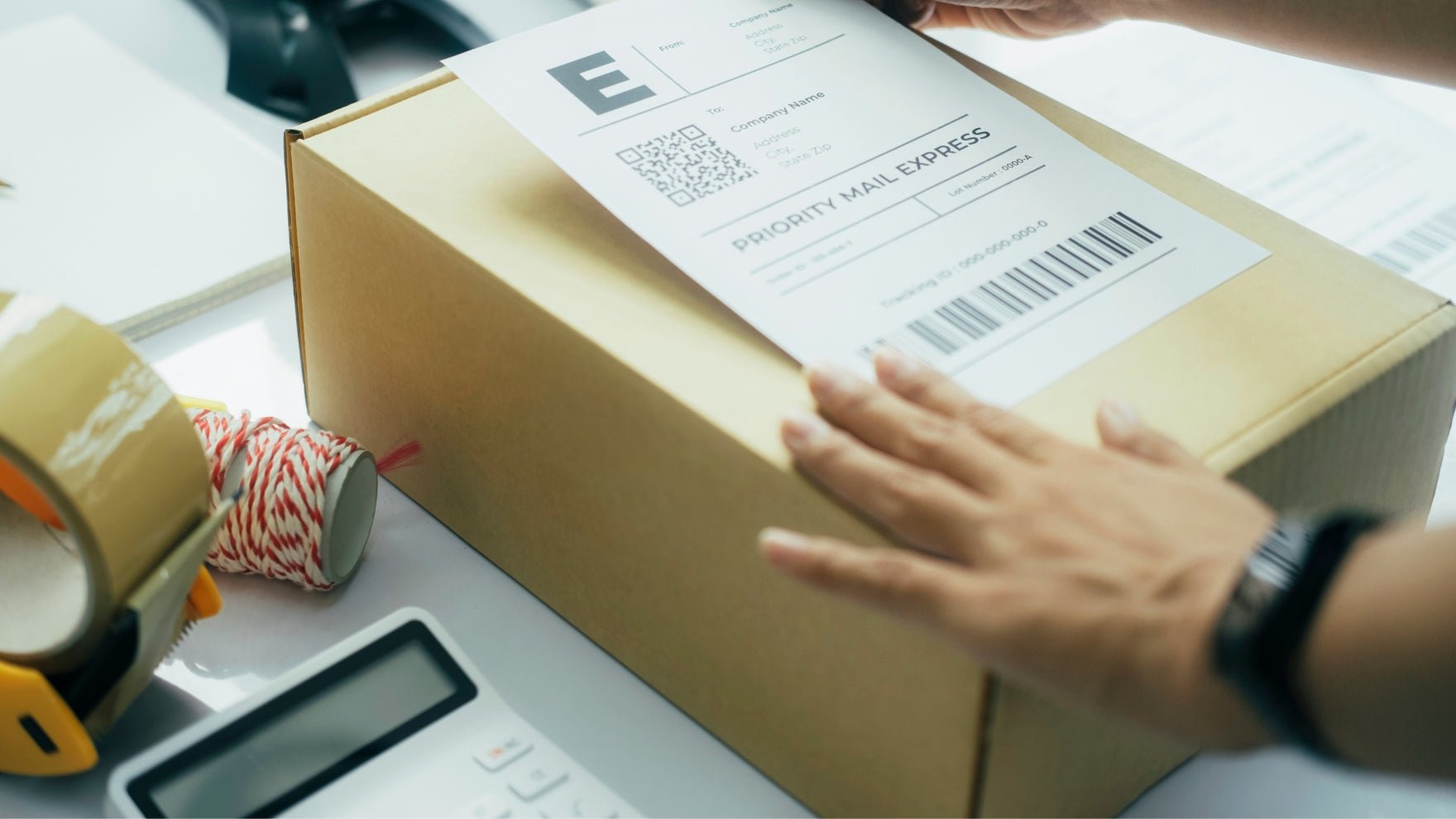
8 Practical Strategies to Reduce Shipping Costs for Online Stores
Want to reduce shipping costs? These 8 proven tips will help you save on packaging, carriers, and delivery.
When you started your small business, you probably didn’t expect to spend so much time figuring out how to save money. But here you are, juggling expenses, keeping customers happy, and trying to turn a profit all at the same time.
And shipping? That’s one of the biggest money drains.
Around 48% of online shoppers abandon their carts because of unexpected shipping costs, and 62% won’t buy from a store that doesn’t offer free shipping. But how can you offer affordable shipping when carrier rates keep climbing and packaging costs never seem to stop adding up?
That’s what this guide is here to help with. You’ll learn practical strategies to reduce shipping costs for online stores, from choosing the right packaging and carriers to using simple tools that can save you time and money.
By the end, you’ll have clear, actionable steps to keep more profit in your business while still delivering a great experience for your customers.
Let’s get started!
1. Weigh and Measure Your Packages
You know that disappointing feeling when you open a bag of chips and realize it’s half empty? Now, imagine your customers getting a huge box… only to find a tiny product rattling around inside.
Not only does it look wasteful, but you’re paying extra for all that empty space.
Carriers use dimensional weight pricing, which means they charge based on size as much as weight. A big box filled with air is just money down the drain.
The fix is to be smart about packaging. Here are a few ideas on how:
- Use a scale to get accurate weight: It might not seem like a big deal, but guessing the weight of your packages can cost you more than you think. If you estimate high, you’re overpaying. If you estimate low, your package might get bumped up to a higher rate when the carrier weighs it. Invest in a reliable digital scale so you can enter precise weights on your shipping labels.
- Measure dimensions carefully so you’re not charged for unnecessary inches: Many shipping carriers use dimensional weight pricing (DIM weight), which means they calculate your cost based on the size of the package, not just the weight. If you’re using a box that’s too big, you’re essentially paying extra for the empty space inside. Measure height, width, and length accurately before selecting a box. Some carriers also have flat-rate options that might be cheaper than paying for oversized packaging.
- Ditch oversized boxes and opt for poly mailers or snug packaging when possible: Boxes are great for protection, but they’re not always necessary. If you’re shipping clothes, accessories, or soft goods, consider poly mailers or padded envelopes instead. They’re lighter, cheaper, and take up less space, meaning you’ll pay less in shipping fees. For fragile items, use smaller, well-padded boxes instead of large ones filled with excessive packing materials.
💡 Pro Tip: If you’re shipping a variety of products, create a packaging size guide with a few standard box and mailer sizes that fit your most common orders.
2. Use a Handheld Printer to Cut Packaging & Labeling Costs
Printing shipping labels, barcodes, or branding stickers is just another hidden cost that adds up over time. You may be buying pre-printed labels or branding stickers. You're just spending money on extra materials that may not even be necessary.
That’s where handheld printers come in. They give you the freedom to print directly onto your packaging, whether it’s boxes, poly mailers, or even envelopes. Instead of dealing with label sheets or sticker rolls, you can print addresses, barcodes, or even your logo right on the surface.
One option to consider is the PrintPeak Handheld Inkjet Printer. It’s portable, easy to use, and works on multiple surfaces, so you can print shipping details, branding, or order numbers on demand.
For small businesses looking to simplify packaging and reduce costs, a handheld printer can be a smart investment. It keeps your process efficient, flexible, and budget-friendly, all while giving your packages a professional touch.
💡 Pro Tip: Use your handheld printer to add a personalized touch to your packaging. Print a short thank-you message, a discount code for their next purchase, or even your social media handle directly on the box or mailer.
Also read: How Handheld Printers Are Transforming Small Business Operations
3. Check for Discounts from Your Selling Platform
If you're selling on Amazon, Etsy, eBay, or Shopify, you might already have access to discounted shipping rates and not even realize it! Many e-commerce platforms partner with major carriers like USPS, UPS, and FedEx to offer lower rates than what you’d get on your own.
Here’s what you can do:
- Check your seller dashboard. Most platforms list their shipping discounts in their seller settings or shipping section. Take a few minutes to explore what’s available.
- Compare rates before buying labels. Even with discounts, some carriers may still be cheaper than others, depending on the package weight and destination. Use your platform’s rate calculator to compare.
- Look for extra perks. Some platforms include free package pickups, automatic tracking, or built-in insurance, which can save you money and time.
- Consider using your platform’s shipping service. Amazon’s Buy Shipping, Etsy’s Shipping Labels, and eBay’s Discounted Shipping offer lower rates than what you’d get at a post office or carrier website.
💡 Pro Tip: If you ship in bulk, check if your platform offers volume-based shipping discounts. Some platforms automatically lower rates as your monthly shipment volume increases!
4. Explore Hybrid Shipping Services for Cheaper Rates
Hybrid is the way to go for work, cars… and even shipping!
If you’re looking for a cheaper way to ship non-urgent packages, hybrid shipping services could be a great option. Services like UPS SurePost and FedEx SmartPost combine the reliability of private carriers with the affordability of USPS for final delivery.
Here’s how it works:
📦 Your package starts its journey with UPS or FedEx, moving efficiently through their network.
📬 USPS takes over for final delivery, handling the last mile to your customer’s doorstep.
Why does this save you money? Because the “last mile” is often the most expensive part of shipping. By passing it off to USPS, carriers lower their costs and those savings get passed on to you.
Hybrid shipping makes sense when:
- You’re shipping lightweight items that don’t need express delivery.
- Your customers are okay with slightly longer shipping times (usually an extra 1-2 days).
- You want to cut costs without sacrificing tracking and reliability.
Like anything, hybrid shipping isn’t perfect.
- It’s slower than standard services. If your customers expect fast delivery, this might not be the best choice.
- Once USPS takes over, you can’t make last-minute changes.
- Not always ideal for urgent or high-value shipments.
💡 Pro Tip: If you’re using hybrid shipping, set clear expectations with customers by mentioning estimated delivery times at checkout. Consider adding a “budget-friendly shipping” option labeled as economy or standard shipping so customers know they’re choosing a lower-cost but slightly slower option.
Also read: Branding Solutions for Small Businesses to Build Trust and Boost Growth
5. Watch for Shipping Carrier Price Changes
Another expense that can creep up without warning is shipping rates.
Carriers adjust their prices regularly, often due to things like fuel costs, inflation, supply chain disruptions, or demand surges. A small price hike here and there might not seem like a big deal, but over hundreds (or thousands) of shipments, those extra fees add up fast.
Here are some tips:
- Keep an eye on carrier rate updates. Most major carriers announce their changes well in advance.
- Look out for promotions or seasonal discounts, especially during peak shopping seasons when carriers may offer special deals.
- Compare rates across different carriers. Just because you've always used one service doesn’t mean it's still the best deal. A quick check might reveal that switching carriers (or even just tweaking your shipping methods) could save you a decent chunk of money.
💡 Pro Tip: Set up shipping rate alerts with your carriers or use shipping software like Shippo, ShipStation, or EasyPost to track price changes automatically. These tools can also help you compare rates in real time, so you can switch to the most cost-effective option before price hikes impact your bottom line!
6. Use Third-Party Insurance Instead of Carrier Insurance
Shipping insurance is important, but it doesn’t have to cost a fortune. Carrier insurance is often more expensive than third-party options, which offer the same protection for up to 50% less.
Using a third-party insurer can save you money while giving better coverage for fragile or high-value items. If you ship a lot, these savings add up fast.
Here are some tips on how to save on shipping insurance:
✔ Compare rates before purchasing. Don’t assume the carrier’s insurance is the best deal. Check third-party providers to see if they offer a better rate.
✔ Use third-party insurance for high-value or fragile items. Many offer broader coverage and fewer exclusions compared to carrier insurance.
✔ Automate coverage. Some third-party providers let you set up automatic coverage for orders over a certain value.
✔ Look for volume discounts. If you’re shipping in bulk, some insurers offer lower rates based on the number of insured shipments per month.
💡 Pro Tip: If you use shipping software like ShipStation or Shippo, you may already have access to discounted third-party insurance. Check their rates before purchasing from your carrier!
7. Offer Local Delivery or Pickup
Not every order has to be shipped! If you have local customers, offering free local pickup or delivery can be a great way to cut shipping costs completely while making shopping more convenient for your buyers.
This will save you money and help you build stronger relationships with your customers. People appreciate businesses that make things easy for them, and a local pickup option means they don’t have to wait (or pay) for shipping.
Here's how you can set up local pickup and delivery:
- Enable local pickup on your website. Shopify, WooCommerce, and Etsy all let you offer in-store or curbside pickup as a checkout option.
- Set up a pickup time system. Use scheduling tools like Calendly or BookThatApp to let customers choose their pickup slot.
- Offer local delivery if feasible. If you’re in a metro area, consider delivering within a set radius for a small fee or even for free on higher-value orders.
- Use delivery tools to stay organized. Shopify Local Delivery, RoadWarrior, and Routific help plan efficient drop-offs and notify customers when their order is on the way.
💡 Pro Tip: Promote local pickup and delivery on your product pages and checkout screen! A simple “Need it faster? Pick up today for free!” message can increase conversions and reduce abandoned carts from people hesitant about shipping costs.
Also read: A Comprehensive Guide to Barcode Printing Solutions
8. Analyze Where Your Orders Are Going
Have you checked where most of your orders are actually going? If you're constantly shipping to the same few states or regions, you might be overpaying for shipping without even realizing it.
When a package has to cross the country, shipping costs jump, not to mention longer delivery times that could leave customers frustrated. But if a big chunk of your orders are heading to the same area, there’s a better way to do things.
Instead of shipping everything from one place, consider using regional warehouses or fulfillment centers. Companies like ShipBob, Deliverr, or even Amazon FBA let you store inventory closer to your customers, which means your customers get their orders quicker and you get cheaper rates.
Even if you don’t want to use a fulfillment center, some carriers offer regional pricing, which can be way cheaper than standard national rates. USPS, for example, has Zone-Based Pricing, where the cost depends on how far your package travels. If most of your customers are in one area, you might be able to negotiate better rates with a shipping carrier that specializes in that region.
💡 Pro Tip: Run a quick order heat map using your e-commerce platform’s analytics. Shopify, WooCommerce, and Etsy all let you track where your orders are going. If you see a pattern, it might be time to rethink your shipping strategy.
Final Thoughts
Running a small business isn’t easy, you’re constantly balancing costs, customer expectations, and making a profit. Shipping costs can feel like a never-ending challenge, but with the right strategies to reduce shipping costs for online stores, you can take control and start saving without sacrificing quality.
Whether it’s choosing better packaging, using a handheld printer, switching carriers, or exploring local delivery, even small changes can add up to big savings over time.
Keep testing what works best for your business, stay flexible, and don’t be afraid to adjust as you grow. You’ve got this! Wishing you lower costs, happier customers, and more profits ahead.




